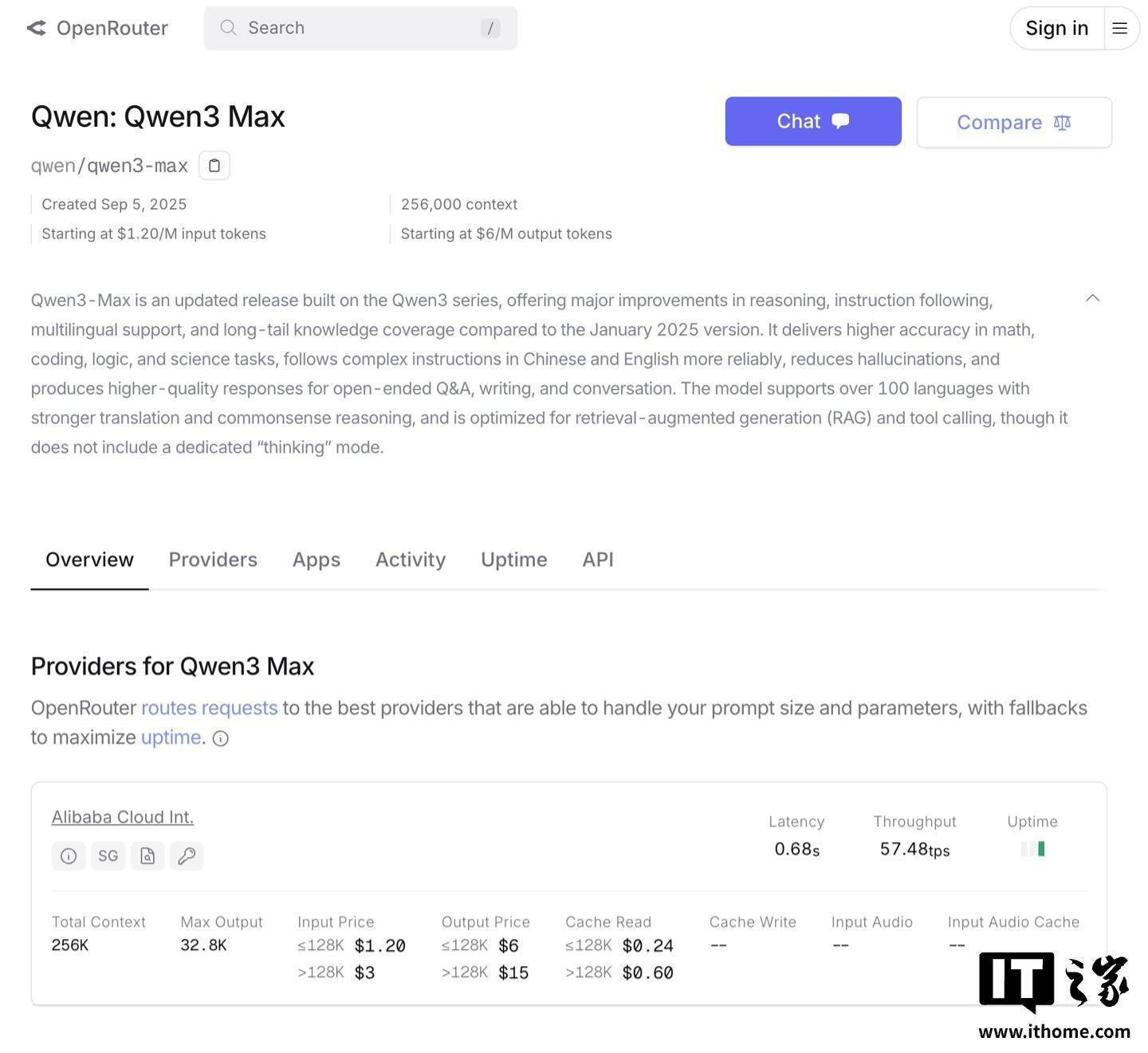The Alibaba Tongyi Qwen team officially launched the Qwen-3-Max-Preview language model today. This version is positioned as the most powerful model in the Tongyi Qwen series to date and is available for use on both the official platform and the OpenRouter platform. This upgrade marks a significant breakthrough in the technical capabilities, multilingual support, and commercial applications of domestic large language models.

On a technical level, Qwen-3-Max has achieved a comprehensive leap in core metrics compared to the version released in January 2025. The model’s accuracy in tasks such as mathematical calculations, code generation, logical reasoning, and scientific problem-solving has significantly improved, especially in handling mixed Chinese and English instructions, where response reliability has increased by over 40%. The research and development team has effectively reduced the likelihood of the model generating erroneous content by optimizing the algorithm architecture, demonstrating more stable output quality in open-ended Q&A, creative writing, and multi-turn dialogue scenarios.
Language support capabilities have become one of the highlights of this upgrade. The new model remarkably supports over 100 languages, achieving industry-leading standards in cross-language translation performance and common-sense reasoning. For retrieval-augmented generation (RAG) and tool invocation scenarios, the team has conducted special optimizations, enhancing the model’s adaptability when accessing knowledge bases and integrating third-party tools. However, this version has not yet integrated deep thinking functionality modules.
In terms of commercialization, the pricing scheme announced by the OpenRouter platform shows that the model input service is charged at $1.20 per million tokens (approximately 8.6 RMB), while the output service is charged at $6 per million tokens (approximately 42.8 RMB). This pricing system provides developers with a market-competitive access cost while maintaining advanced technology.
According to the technical white paper, the architectural innovations of Qwen-3-Max are primarily reflected in the optimization of attention mechanisms and knowledge distillation techniques. These improvements significantly enhance the model’s ability to handle long texts and specialized knowledge, resulting in better performance in contextual understanding. Users can currently experience the new model through the Qwen Chat official channel and the OpenRouter API interface, and it is expected to trigger application transformations in fields such as intelligent customer service, educational tutoring, and research analysis.返回搜狐,查看更多
平台声明:该文观点仅代表作者本人,搜狐号系信息发布平台,搜狐仅提供信息存储空间服务。

